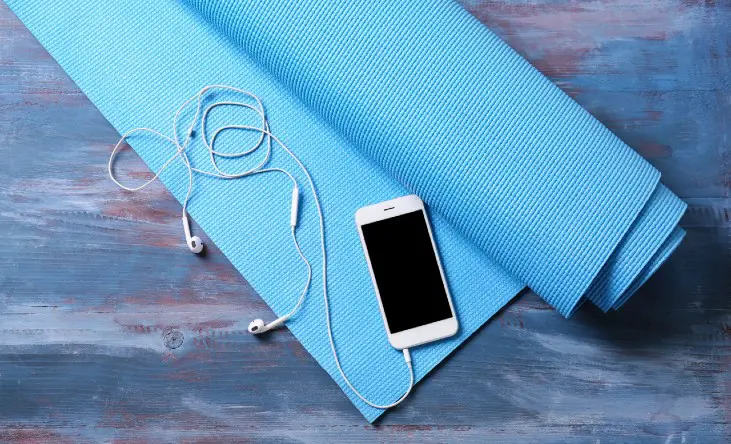HEALTH | 07.07.2020
Mindfulness, the key to turning off autopilot and living with more fulfillment
Have you ever found yourself at work without remembering how you got to the office? Can you ever remember reading several pages of a book without really paying attention? This feeling of going into autopilot mode is just the opposite of being mindful. Mindfulness trains you to be present wherever you are, in every moment. And take note, because being in the here and now is more difficult than you might think.
You’ve probably heard the term dozens of times, but do you really know what mindfulness means? Mindfulness is a Buddhist discipline based on meditation. Scientific studies on its benefits began around 1970 and its practice has taken off ever since. Mindfulness involves consciously paying attention to the present moment, with interest, curiosity and acceptance.
If you start to gaze inward, one of our first revelations will be discovering that we usually face life by operating in two ways or manners. In “doing mode,” we are focused on achieving a goal: going to work, cooking, completing a report, etc. “Being mode,” which is cultivated by practicing mindfulness, is characterized as not being devoted to any specific objective. Quite the contrary, it allows us to assume the role of an observer, contemplating reality as it presents itself. The more we connect with being, the more aware we become of our flow of thoughts, our physical sensations and emotions, as well as the close relationship linking these three aspects.
What is the purpose of “being present”?
In his work Tómate un respiro (Take a break), Dr. Mario Alonso Puig highlights some of the benefits of mindfulness: “it increases our efficiency, our ability to be attentive and focused, to understand, to learn, and be more creative. It also keeps us much more calm and balanced when facing challenges. What’s more, it improves interpersonal relationships because it not only develops our ability to empathize with others, but to love and forgive.”
Eva Rodríguez, a psychologist specialized in occupational health and Head of Diversity, Health and Well-Being at MAPFRE, explains: “people who regularly devote adequate time to practicing mindfulness achieve a greater degree of self-awareness and optimize emotional regulation, thereby reducing their stress and anxiety levels. They sleep better, have better memory and a greater ability to concentrate, their relationships and creativity improve, and ultimately, they change how they face the world.”
The origin of mindfulness
Jon Kabat-Zinn, who founded the Stress Reduction Clinic at the University of Massachusetts Medical School in 1979, adapted and introduced this discipline to the western world, stripping it of religious or spiritual connotations and applying it to problems such as those associated with chronic pain or stress.
A study conducted by psychiatrists at Massachusetts General Hospital and published in the journal Psychiatry Research in 2010, demonstrated that people who had practiced meditation for at least 8 weeks experienced a significant increase in gray matter throughout various brain regions, mainly those relating to memory, learning or emotional regulation. As such, it appears that meditating can lead to structural changes in our brain and, therefore, can likely optimize how we think and how we act in terms of day-to-day demands.
Starting the practice of mindfulness
To get a first impression of how meditation feels, simply sit in a chair with your back straight, close your eyes and breathe deeply while counting to ten.
The first time you feel like meditating, you will probably be inundated with preconceptions and expectations about what should happen. In this regard, in his work Full Catastrophe Living, Jon Kabat-Zinn explains: “we try not to impose our ideas on what we should feel, think, or see in our experience, but rather simply remember to be receptive and open to what we feel, think, or see, and to accept it because it is here and now.”
However, it’s worth noting that there is a lot of unreliable information on this subject and, if you are genuinely interested in learning more, it would be best to attend an official MBSR (Mindfulness-Based Stress Reduction) training center, an eight-week program specifically designed to instill the fundamentals of mindfulness and apply them to stress management.

Your pocket-sized meditation guide
Another easily accessible option to get started with meditation is to try some of the many mobile apps, but do note that not everything app you find in the app store will be faithful to the formal practices of mindfulness. Some of the most used apps include:
The Mindfulness App
This app has more than two hundred guided meditations for different levels, from beginner to expert.
Insight Timer
One of the most popular apps in English that has recently been translated into Spanish, with a great reception. This tools allows you to customize the duration of meditation sessions and participate in discussion groups and local meetings.
Headspace
One of the most downloaded meditation apps around the world. It offers simple exercises for practicing mindfulness, stress management and improving concentration. It was created Andy Puddycombe, an English Buddhist monk, and contains guided sessions divided into different thematic modules.
